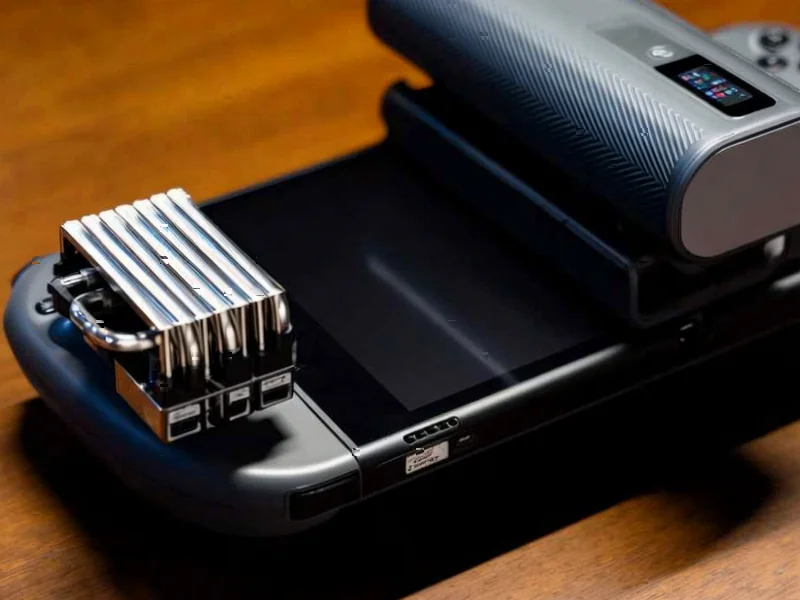According to Android Authority, the OneXFly Apex gaming handheld features an external 85Wh battery and liquid cooling system that could make it the most powerful device in its category. The design reportedly reduces weight while preventing thermal throttling and operating more quietly than traditional fan cooling. However, the high-power chipset likely requires the device to remain plugged in most of the time, raising questions about its true portability.
Table of Contents
Understanding the Technical Trade-offs
The OneXFly Apex represents a fundamental shift in handheld gaming console design philosophy. Traditional handhelds prioritize portability and battery life, but this device appears to sacrifice both for raw performance. The external battery approach, reminiscent of the GPD Win series, creates an interesting paradox: while the main unit might be lighter, users must still carry the substantial external power source. The liquid cooling system, while innovative for this form factor, introduces reliability concerns that air cooling doesn’t face – potential leaks, pump failures, and the complexity of maintaining a sealed liquid system in a portable device.
Critical Analysis of Practical Limitations
The most significant challenge Android Authority identifies – the need for constant power connection – fundamentally undermines the concept of a portable gaming device. High-performance chipsets drawing substantial power create a dependency cycle: the very performance that makes the device appealing requires it to be tethered. This creates a “portable desktop” rather than a true handheld, limiting its use cases to locations with reliable power access. The external battery solution, while clever for weight distribution, creates its own problems: additional points of failure, potential connection issues, and the psychological barrier of managing multiple components instead of a single unified device.
Industry Impact and Market Positioning
This device enters a crowded market dominated by Steam Deck, ASUS ROG Ally, and Lenovo Legion Go, all of which have established approaches to the performance-portability balance. The OneXFly Apex’s radical design could either carve out a niche of performance-obsessed users or serve as a cautionary tale about pushing technical boundaries too far. The external battery technology approach, if successful, might influence future designs across the industry, particularly as manufacturers struggle with the physical limitations of internal battery capacity versus increasing power demands.
Realistic Outlook and Market Viability
While the technical specifications sound impressive, the OneXFly Apex faces an uphill battle for mainstream adoption. The combination of high likely price point, compromised portability, and unproven cooling technology in a consumer product creates significant barriers. This device will likely appeal primarily to early adopters and technical enthusiasts rather than the broader gaming market. Its success will depend on execution quality, thermal performance in real-world use, and whether the trade-offs justify the theoretical performance gains for actual gaming experiences outside of benchmark tests.
Related Articles You May Find Interesting
- Quantum Measurement Breakthrough Solves Complex Problems Faster
- TikTok Deal Signals Tech Diplomacy Shift
- Zebra Optimization Algorithm Extends Wireless Sensor Network Lifespan
- iPSC-derived ITGA6-positive cells restore aqueous humor outflow in glaucoma eyes – Nature Communications
- Samsung’s Galaxy Buds 3 Update Focuses on Reliability Over Features



